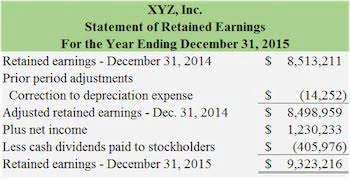
To facilitate ongoing monitoring and evaluation, organizations must develop regular reporting and review processes that collect and analyze data on their performance. Therefore, organizations must identify relevant and measurable KPIs directly linked to their objectives when implementing performance-based budgeting. This might involve examining existing performance measurement systems and updating them to align with the organization’s goals and https://jagowin138.com/fedex-office-and-print-services-inc-employer/ priorities.
Levels of Involvement in the Budgeting Process

Another industry that can benefit from this type of budgeting system is the healthcare industry. Performance-based budgeting encourages hospitals and clinics to focus on patient outcomes rather than costs. It allows them to measure their performance regarding patient satisfaction, health outcomes, quality of care, and other metrics. It considers the resource usage, results achieved, objectives met, and goals set by the organization and helps ensure that funds are allocated according to performance rather than simply by need. The resources are categorized according to the programs and provide performance indicators. It finds solution-based accountability management responsible for the objectives they have to achieve.
How I Stay Disciplined With Money Without Being Perfect

The advantages and disadvantages are similar to those for zero-based budgeting. One of the significant disadvantages of incremental budgeting is its inherent short-term focus. Organizations that rely on this method often prioritize immediate needs and existing programs, which can lead to a neglect of long-term strategic goals. By emphasizing minor adjustments to the previous year’s budget, organizations may overlook investments that are crucial for future growth and innovation. This short-sighted approach can result in missed opportunities that could have positioned the organization for success in an evolving market.
Five hybrid budgeting approaches to consider.
- Due to this ongoing assessment, decision-makers can make real-time adjustments, which helps them improve financial planning and strategy.
- Companies might use traditional budgeting for the start of the year but employ rolling forecasts to adjust projections as the year progresses and new data becomes available.
- This process involves engaging various stakeholders, including policymakers, department heads, and budget analysts, to ensure alignment with organizational objectives and priorities.
- Ultimately, understanding the impact of incremental budgeting on strategic planning is vital for organizations aiming to achieve sustainable success.
- There are other methods that you can use, such as bottom-up, top-down, zero-based, or scenario-based forecasting.
Seeing yourself heading in the right direction and getting closer to achieving your goals will give you that extra push if/when you need it. Budgeting helps you determine what your goals are, and make a plan for meeting them. It gives you the opportunity to create a more concrete plan to keep you on track as well.
- (iii) It also helps to evaluate the progress or otherwise in time-bound activities so that remedial measures may be adopted to complete such objective.
- For more on best practices, check out our piece on activity-based budgeting.
- Since resources are allocated incrementally, organizations can prioritize funding for programs that have proven effective and beneficial.
- As a result, it enhances organizational control and allows the accumulation of expenditure data at each functional level.
- Finally, the method’s simplicity allows the company’s management to save time on the budgeting process.
- It allows organizations to evaluate success based on concrete metrics and adapt strategies as needed, ensuring that resources are being used optimally to achieve the desired impact.
One of the disadvantages of performance budgeting is that it can be complex and resource-intensive to implement and maintain. Developing and monitoring performance indicators, as well as collecting and analyzing performance data, can require significant time and resources. While performance budgets offer numerous benefits, including increased HOA Accounting accountability, communication, and the ability to quantify goals, they also present certain disadvantages.
- To facilitate ongoing monitoring and evaluation, organizations must develop regular reporting and review processes that collect and analyze data on their performance.
- Think about economic indicators like inflation and unemployment, industry trends like new tech and regulations, and market dynamics like consumer behavior and supply chain issues.
- It enhances transparency and accountability by making the budgeting process more data-driven and outcome-oriented.
- This forces them to justify all operating expenses and to consider which areas of the company are generating revenue.

Establishing a budget helps an organization allocate its resources for the coming fiscal period. As the organization disburses funds, it traces its disbursements to the amounts it budgeted and adjusts the budget to meet unexpected expenses. Involving managers in the budgeting process helps managers understand the financial operations of the business and makes them accountable for their department’s expenditures. A line item budget is just one approach to making a budget, and there are numerous strengths and weaknesses of budgeting this way. As with any significant process changes, many of the downsides of priority based budgeting have to do with navigating internal cultural shifts. Budget reallocation, of any magnitude, has high potential to cause a sense of competition and performance based budgeting advantages and disadvantages unfairness.